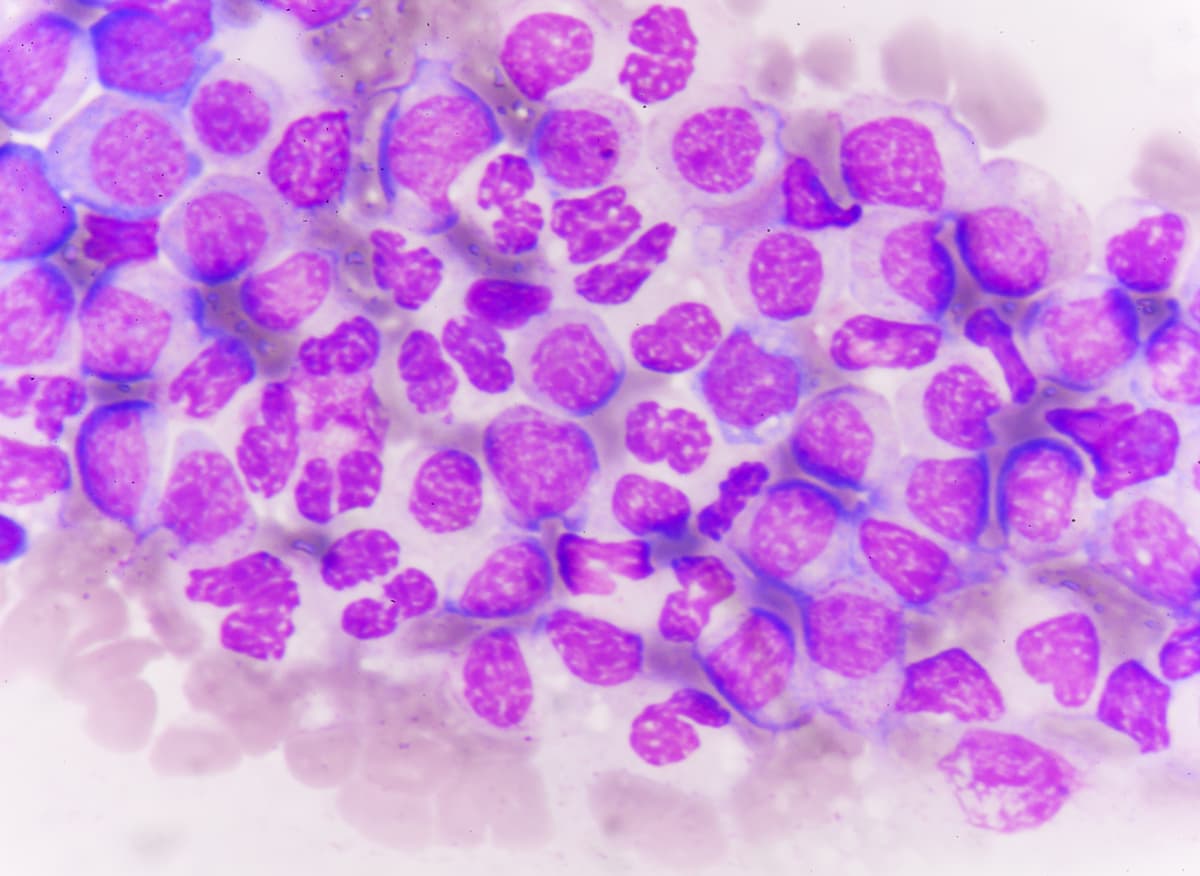Phase 2a SLS009 Trial in R/R AML Completes Enrollment and Shows Efficacy
Phase 2a data show no dose-limiting toxicities with SLS009 among patients with relapsed/refractory acute myeloid leukemia.
In the ongoing open-label, single-arm phase 2a trial of SLS009 (NCT04588922), 30 patients across 5 United States centers were included. Investigators are evaluating the agent’s safety, tolerability, and efficacy in combination with venetoclax and azacitidine at 45 mg and 60 mg dose levels.

Investigators reported positive initial data and completion of enrollment in a phase 2a trial (NCT04588922) of SLS009 (formerly GFH009), a CDK9 inhibitor, in relapsed/refractory acute myeloid leukemia (AML), according to a press release from the developers, SELLAS Life Sciences Group, Inc.1
Initial trial data show that SLS009 was well tolerated across all doses with no observed safety issues. Additionally, the overall response rate (ORR) was 29.6% in evaluable patients, the highest of which was 50% at a 30 mg twice weekly dosing regimen.
“There has been a high level of enthusiasm from the clinical sites, trial investigators, and patients, reflecting the significant unmet need in the AML patient population previously treated with venetoclax [Venclexta]-based regimens.” Angelos Stergiou, MD, ScD, hc, president and chief executive officer at SELLAS, said in the press release.1
In the ongoing open-label, single-arm phase 2a trial of SLS009, 30 patients across 5 United States centers were included. Investigators are evaluating the agent’s safety, tolerability, and efficacy in combination with venetoclax and azacitidine at 45 mg and 60 mg dose levels.
Additional safety findings from initial data indicate no dose-limiting or high-grade treatment-related non-hematologic toxicities. Furthermore, the hematologic toxicities profile showed no discernable difference compared with prior reports of venetoclax-based regimens.
Regarding efficacy, the first dose level of 45 mg once a week resulted in an increased median overall survival (OS) from an expected median of 2.5 months with venetoclax plus hypomethylating agents to 5.4 months with SLS009-based treatment.
Three of 9 (33.3%) evaluable patients achieved leukemia-free status—which included complete responses (CR), complete responses with incomplete hematologic recovery (CRi), and a morphologic leukemia-free state (MLFS)—after receiving the second dose level of 60 mg once a week. Similarly, 4 of 8 patients (50%) achieved leukemia-free status after the third dose level of two 30 mg doses per week. Subsequently, median survival has not been reached in either dose level.
Patients with mutational status, notably ASXL1 mutations, had the highest observable response rate, including 6 of 8 responding patients with myelodysplasia-related somatic mutations and 5 with ASXL1 mutations. There was a 100% response rate achieved among patients with ASXL1 mutations for the 30 mg biweekly dose level.
“[W]e are excited to share very promising initial data from this phase 2a trial. Efficacy was demonstrated across all cohorts far exceeding the targeted ORR of 20% and median [OS] of 3 months. The results also showed that SLS009 was well-tolerated across all doses. These data give us increased confidence in SLS009 as a potential new treatment for AML,” said Stergiou.1
Male and female patients at least 18 years of age and pediatric patients ages 12 to 18 years old with a body mass of at least 40 kg are considered for inclusion in the trial.2 Among this population, patients with cytologically or histologically confirmed relapsed or refractory hematologic malignancies such as AML, chronic lymphocytic leukemia or small lymphocytic lymphoma, and lymphoma are considered for inclusion.
Exclusion criteria include patients who have bulky disease equal to or greater than 10 cm, require cytoreductive therapy, or have symptomatic central nervous system (CNS) metastases or primary lymphoma such as primary CNS lymphoma, leptomeningeal disease, or spinal cord compression. Having severe cardiovascular disease within 6 months of study entry, hypereosinophilic syndrome, a concurrent malignancy within 5 years, active hepatitis B or hepatitis C virus infection, or history of human immunodeficiency virus (HIV) infection is also grounds for exclusion.
References
- SELLAS announces completion of enrollment and initial positive data in phase 2a trial of SLS009 in r/r AML. News release. SELLAS Life Sciences Group, Inc. June 10, 2024. Accessed June 11, 2024. https://tinyurl.com/msm657ya
- Study of SLS009 (formerly GFH009) a potent highly selective CDK9 inhibitor in patients with hematologic malignancies. ClinicalTrials.gov. Accessed June 11, 2024. https://tinyurl.com/3j558dxj
Newsletter
Stay up to date on recent advances in the multidisciplinary approach to cancer.